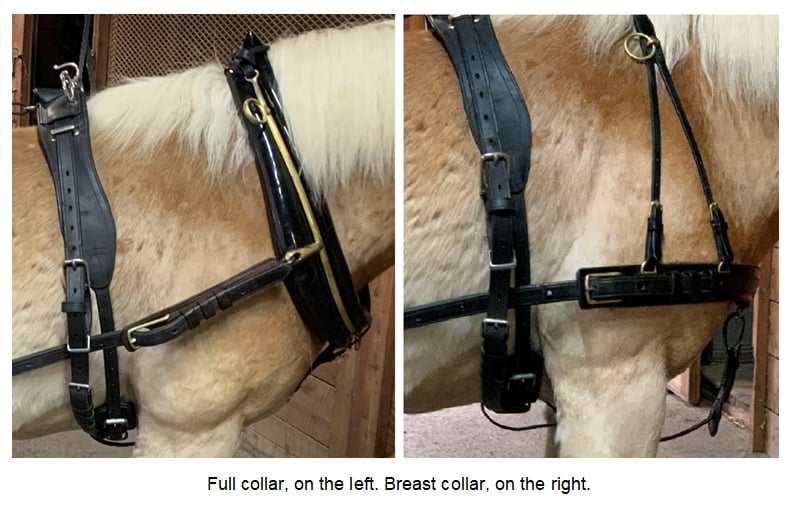|
By definition, pushing is applying force in a direction away from ourselves. When we push a shopping cart, we stand behind it and push it away from ourselves. Pulling is applying force in a direction toward ourselves; when we pull a wagon, we typically walk forward in front of the wagon, and pull the wagon toward ourselves with one hand.
It’s common to speak of horse-drawn carriages, or to say that a horse is pulling a carriage. This is intuitive; they are in front of it, aren’t they? But horses are not people. Are they really pulling it, or are they pushing?
Let’s start by looking at the behavior and mechanics of the horse. In nature, horses do not generally push or pull objects. Their behavior is mainly about grazing and avoiding predators. Horses have a huge shoulder, as generally speaking they carry 75% of their body weight over the front legs. They also have powerful hindquarters. These characteristics give the horse his main defense against predators: the ability to propel himself forward suddenly and at high speed, away from threats. When we drive our horses, they are moving forward and away from us (hopefully in a more controlled way!). It is this motion that we harness to propel our horse-powered vehicles.
A harness will include a collar – either a breast collar or a full collar -- which fits against the horse’s shoulder. Each type has advantages and disadvantages.

The major advantages of a full collar are:
- It covers more of the shoulder.
- It has a greater cushioning effect.
- As the horse lowers his head and neck, a full collar will give him greater leverage.
Some disadvantages of a full collar include:
- Cost: generally speaking, these are more expensive than a breast collar.
- Weight: they weigh more than a breast collar, so can be more difficult to use.
- They are a specific size, so if a horse changes shape he will require a different collar size.
Advantages of a breast collar:
- It is lighter weight for both horse and human.
- It is generally much less expensive than a full collar.
- It is much more adjustable than a full collar.
Disadvantages of the breast collar:
- It covers much less of the surface area of the shoulder. Consequently, the horse cannot normally move as much weight as with a full collar.
As we drive our horses in front of us, they use their powerful shoulders to push against their collars, which moves the carriage via the traces that connect the collar to the vehicle. For maximum efficiency you would need the straightest possible line from the horse’s shoulder to the point of attachment to the vehicle. In an ideal world, this would be the midpoint of the front axle. However, most carriages have the point of attachment much higher than optimum as a matter of convenience in putting the horse to the carriage, so some mechanical efficiency is lost.
Even so, as a general rule of thumb, a fit trained horse can move as much 1 ½ times his body weight as a dead weight on the floor. Horses trained for pulling competitions can move much more than this, even up to three times their own body weight with a wheeled vehicle on the flat, and their own body weight in mountainous terrain. During my years driving with Andreas Nemitz of Coaching in Bavaria, it was amazing to witness the performance of his teams as we drove through the Alps for miles on steep grades. Whether we think of it as pushing or pulling, the right equipment makes all the difference for your horse!
Fun Fact: the horse's gait at a walk closely mimics the human gait.
Riding a horse can produce movement patterns, especially in the hips, that imitate a natural human stride.
Paul Bennett is a team member of The Equine Expert LLC, a multi-discipline equine expert witness and consulting firm offering legal expert witness and consulting services in court cases, legal matters and business affairs. Paul is an expert in carriage driving, carriage horses and equine therapy. He has been a professional coachman for years in both Europe and the US and is currently the Director for Swiftsure Therapeutic Equestrian Center in Idaho. For more information on Paul visit www.theequineexpert.com or you may contact Paul at Paul@theequineexpert.com.
|

